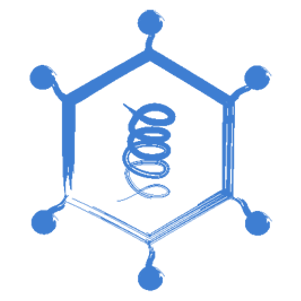|
|
| (9 intermediate revisions by 4 users not shown) |
| Line 1: |
Line 1: |
| | {{frontpage | | {{frontpage |
| | |pagetitle =Mycoplasmas | | |pagetitle =Mycoplasmas |
| − | |pagebody = | + | |pagebody =The Mycoplasmas are small free-living prokaryotic organisms. They cause many diseases, notably respiratory diseases in farm animals including [[Contagious Bovine Pleuropneumonia]]. |
| | |contenttitle =Content | | |contenttitle =Content |
| | |contentbody =<big><b> | | |contentbody =<big><b> |
| | <categorytree mode=pages>Mycoplasmas</categorytree> | | <categorytree mode=pages>Mycoplasmas</categorytree> |
| | </b></big> | | </b></big> |
| − | |logo = | + | |logo =bugs-logo copy.png |
| | }} | | }} |
| | | | |
| − | ===Overview===
| |
| | | | |
| − | *Pathogens belong to the ''Mycoplasma'' and ''Ureaplasma'' genera
| |
| − | *Cause many diseases especially respiratory diseases of farm animals including contagious bovine pleuropneumonia
| |
| − | *Can be involved in mastitis and conjunctivitis in cattle
| |
| − | *Implicated in respiratory and urinary tract diseases in dogs and cats
| |
| − | *Non-pathogenic mycoplasmas present in the rumen
| |
| − | *Live on mucous membranes of oronasal cavity, conjunctiva and intestines
| |
| − | *Stress factors and concurrent disease may predispose to tissue invasion
| |
| − | *Usually host-specific
| |
| − | *Limited survival in the environment
| |
| | | | |
| − | ===Characteristics===
| + | [[Category:Bacterial Organisms]] |
| − | | |
| − | *Smallest free-living prokaryotic organism
| |
| − | *Pleomorphic organisms
| |
| − | *Have no peptidoglycan cell wall
| |
| − | *Susceptible to dessication, heat and disinfectants
| |
| − | *Require enriched media containing animal protein, sterol and a source of DNA for growth
| |
| − | *Colonies have a fried egg appearance
| |
| − | *Most are facultative anaerobes
| |
| − | | |
| − | ===Pathogenesis and pathogenicity===
| |
| − | | |
| − | *Mycoplasmas adhere to host cells and produce toxins
| |
| − | *Some adhere to [[Neutrophils|neutrophils]] and macrophages and prevent phagocytosis
| |
| − | *Mycoplasmas induce proliferation of macrophages and [[[[Monocytes - WikiBlood|monocytes]]]], and release of cytokines such as TNF and interleukins
| |
| − | *Cause damage to cilia in the respiratory tract leading to pneumonia
| |
| − | *Molecular mimicry allows some mycoplasmas to avoid the host immune response and may initiate immune-mediated disease
| |
| − | | |
| − | ===Diagnosis===
| |
| − | | |
| − | *Samples can be tested for the presence of mycoplasmas by fluorescent antibody techniques, peroxidase techniques and PCR
| |
| − | *Biochemical profiles such as urease production can be used for identification
| |
| − | *''Ureaplasmas'' produce urease, whereas ''Mycoplasmas'' do not metabolise urea
| |
| − | *Serolgy is required for specific identification including complement fixation tests, ELISA, agglutination tests and haemagglutination-inhibition tests
| |
| − | *Growth inhibition tests using specific antisera can be used as well as fluorescent antibody tests
| |
| − | | |
| − | ===Other mycoplasmas===
| |
| − | | |
| − | *''M. bovis'', ''M. dispar'' and ''Ureaplasma'' can be involved in [[Respiratory Bacterial Infections - Pathology#Enzootic pneumonia of calves|Enzootic pneumonia of calves]]
| |
| − | *''M. ovipneumoniae'' is implicated in [[Respiratory Bacterial Infections - Pathology#Enzootic pneumonia of lambs|enzootic pneumonia of lambs]]
| |
| − | *''M. felis'' may be involved in mild [[Respiratory Bacterial Infections - Pathology#Mycoplasma felis|respiratory infection]]
| |
| − | *Mycoplasmas may cause [[Chronic Inflammation - Pathology#Lymphocytic Inflammation|lymphocytic chronic inflammation]] (peribronchiolar and perialveolar cuffing)
| |
| − | *Cause [[Peritonitis - Pathology#In sheep|peritonitis in sheep]], [[Peritonitis - Pathology#In goats|peritonitis in goats]] and [[Peritonitis - Pathology#In pigs|peritonitis in pigs]]
| |
| − | [[Category:Bacteria]] | |
